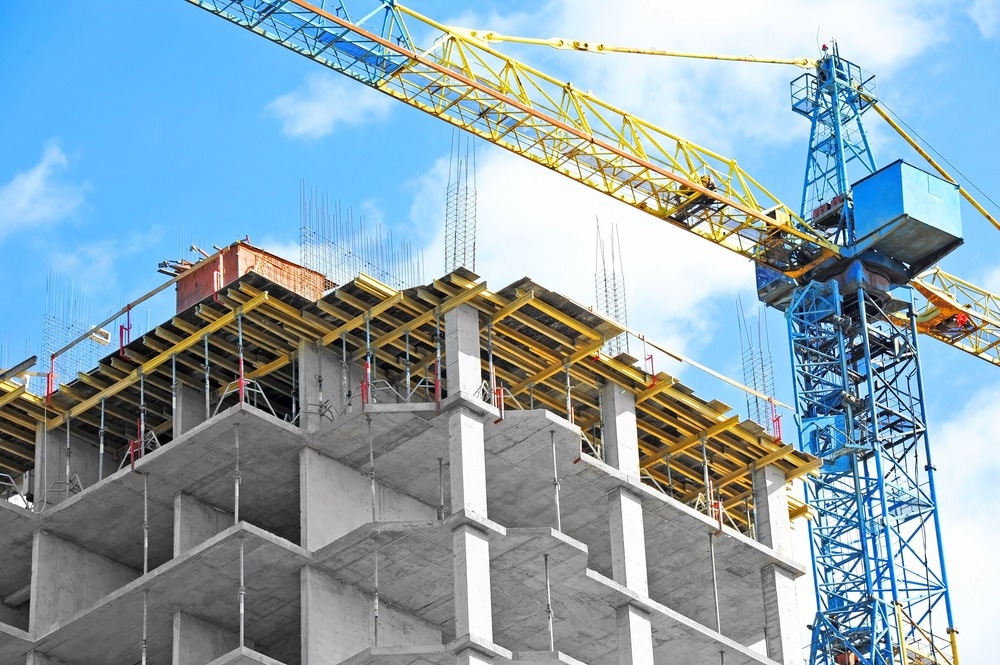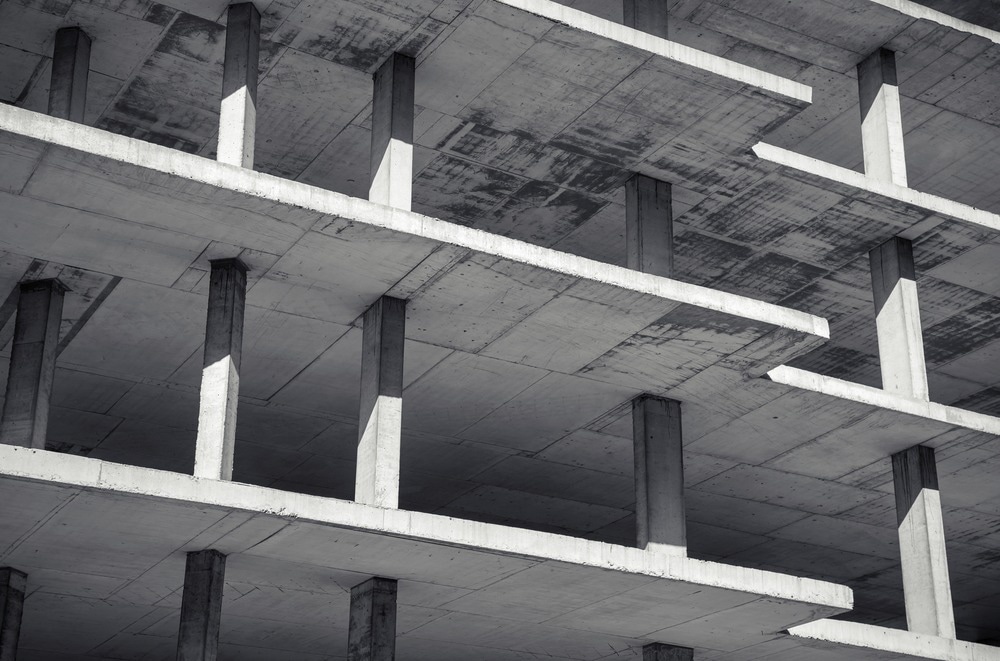Decarbonizing the construction industry is currently a central research focus. Engineers and scientists have extensively explored innovative strategies to reduce carbon emissions and consequent climate change-inducing characteristics of materials and processes.

Image Credit: Olena Sergeyeva/Shutterstock.com
This article will provide an overview of current strategies being employed in the construction sector, and will explore an innovative approach: utilizing recycled carbon dioxide in fresh concrete, the most commonly utilized building material today.
Why is Decarbonizing the Construction Industry Important?
Industrial activity and population growth have been intrinsically linked to climate change over the past few decades, with growing evidence that human activity is causing global temperature rises, increasingly extreme weather events, and accelerating biodiversity loss.
The global construction and building sector is the biggest consumer of raw materials and is responsible for around 25-40% of the total carbon dioxide emissions worldwide. This is in large part driven by rapid industrialization and urbanization in emerging economies such as China and India.
There exists significant potential for decarbonizing construction, an essential industry that provides infrastructure and domestic and commercial buildings. With the world warming at an alarming rate, there is no space for the industry’s current business-as-usual approach to continue, and innovative decarbonization strategies have been explored in recent years.
Cement and Concrete Production: A Key Driver of Carbon Emissions in the Sector
Cement and concrete manufacture are major contributors to the construction industry’s CO2 emissions. Responsible for around 7-8% of total emissions, the global cement industry has more than tripled its emissions in the past three decades as cement production has increased in intensity to meet global demands.
More than four billion tonnes of cement are produced and consumed per year globally. Producing this critical construction material requires the use of limestone, which is heated to yield calcium oxide, otherwise known as lime. This process emits considerable amounts of carbon dioxide.
Moving cement and concrete manufacture away from its current linear model to a model more in line with the aims of the circular economy is a key research focus currently. Globally, engineers, companies, and architects are increasingly embracing the circular economy as a central element of the construction industry.
Cement and Concrete Decarbonization Strategies
Innovations in building material design and processing are improving the sustainability of concrete. Multiple innovative strategies have been implemented in research and test projects recently and are increasingly being applied in real-world applications in several countries.
Waste materials from various industrial processes have been incorporated into sustainable concrete to reduce the amount of virgin resources needed in its production. This approach has the additional benefit of reusing waste resources from industries such as steelmaking or the construction sector itself which would otherwise be disposed of in landfills or incinerated.

Image Credit: Evannovostro/Shutterstock.com
Another approach recently investigated is the inclusion of carbonaceous nanomaterials such as graphene in concrete. This strategy helps to enhance the mechanical properties of concrete, reducing the amount needed in building projects and therefore improving its carbon footprint. This produces a material known as Concretene, which has been used in a gym in Amesbury in the UK.
Buildings also have a significant amount of embedded carbon, which is lost when they are demolished. Repurposing waste concrete from demolition is a common approach to producing recycled concrete aggregate that can be reused. However, due to its low quality, it is commonly used in applications such as new roads, which does not adequately satisfy the circular economy aims of the construction sector.
Utilizing Concrete as a Carbon Sink: An Innovative Approach to Decarbonization
An intense focus has been placed in recent years on mitigating the climate change-inducing effects of industrial carbon dioxide emissions by capturing and sequestering them. This has led to widespread research on carbon capture and storage (CCS) technologies. But what if concrete and cement could become carbon sinks?
This is the aim of CarbonCure, a company based in Halifax, Canada. Their technological solutions introduce recycled CO2 into fresh concrete. This recycled CO2 reacts with calcium in raw mixtures to produce calcium carbonate, reducing the need for raw materials and intense carbon dioxide-emitting manufacturing processes.
The company’s innovative carbon dioxide-injecting technology can be used with both fresh concrete and recycled concrete aggregates without compromising the final product’s quality. The CO2 becomes mineralized and permanently embedded in the mixture and provides both environmental and economic benefits for concrete manufacturers.
The technology can be easily installed in current concrete plants with no upfront capital investment, decreases further operational costs, and improves the sustainability of concrete production. Once injected, it enhances properties such as compressive strength, which reduces the need for cement while maintaining strength requirements.
CarbonCure’s technology consists of two main elements: A control box and a valve box. The valve box connects to a tank containing the recycled CO2, delivering a controlled flow of carbon dioxide into the concrete mix. Real-time control and data analysis are provided by the system’s control box. Seamless software integration makes this a highly efficient system with no negative effects on batching and loading time.
This sequestered CO2 is permanently removed from the environment and is not released even when the building is demolished. CarbonCure’s solution can be used for every residential and commercial application, reducing the amount of cement needed in a building project and helping the construction sector to achieve its net zero and circular economy aims.
In Summary
Anthropogenic climate change and the increasing damage to the natural environment require innovative decarbonization solutions in industrial sectors such as construction. Many approaches have been explored in recent decades, and with technologies such as CarbonCure’s system, the construction industry can benefit from the ability to make new buildings into carbon sinks that remove emissions from the environment.
More from AZoBuild: Cleaner Construction with Carbon-Negative Algae-Grown Limestone
References and Further Reading
Sanderson, K (2022) The path towards more-sustainable building construction [online] nature.com. Available at:
https://www.nature.com/articles/d41586-022-03650-3
Carboncure.com (website) Available at:
https://www.carboncure.com/
Disclaimer: The views expressed here are those of the author expressed in their private capacity and do not necessarily represent the views of AZoM.com Limited T/A AZoNetwork the owner and operator of this website. This disclaimer forms part of the Terms and conditions of use of this website.